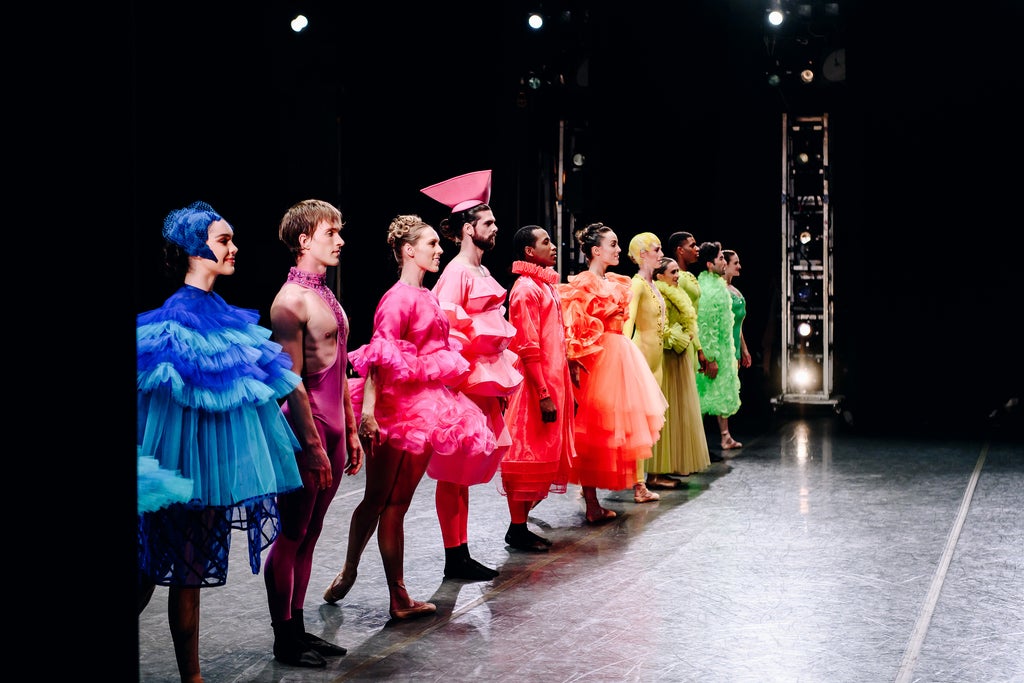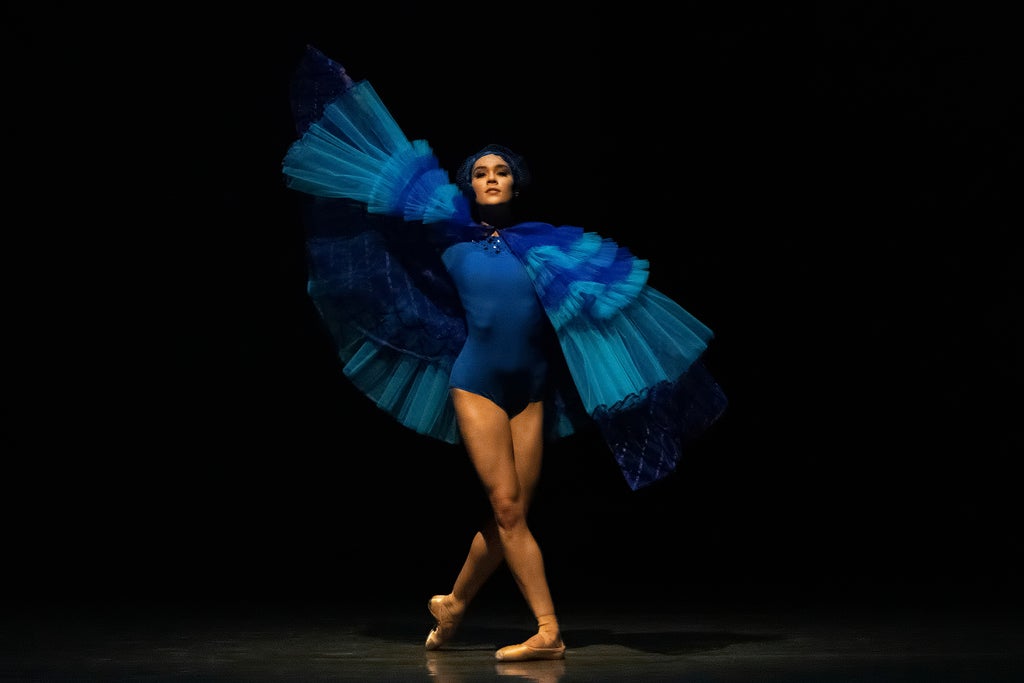
Designers Esteban Cortázar and Christopher John Rogers are used to making history. At 17, the Colombian-American Cortázar became the youngest person ever to show during New York Fashion Week, while Louisiana-born Rogers dressed the United States’ first-ever female Vice President Kamala Harris for the 2021 Presidential Inauguration.
The two once again stepped into personally uncharted territory to design costumes for two new premieres during New York City Ballet’s fall fashion gala, which began in 2012, and has worked with designers like Virgil Abloh, Jason Wu, Iris Van Herpen, Laura Kim and Fernando García of Monse, and Alexander McQueen’s Sarah Burton. For the 2021 show, Cortázar and Rogers partnered with choreographers Andrea Miller and Sidra Bell on two brand-new ballets for the legendary dance company, originally founded in 1948 by Georgian-American choreographer and dancer George Balanchine. While both Cortázar and Rogers are new to the world of ballet, it’s easy to see why they — who are both known for making colorful, theatrical clothes that are made for movement — would have a natural sensibility for the ballet stage. “It’s so great to be doing something so important, and so cultural, because this is really creating culture,” says Cortázar, referring to the historic night that saw the first woman of color composer and first Black choreographer to create a piece for the New York City Ballet.
For Cortázar, who has 20 years of experience in fashion, the opportunity was a homecoming. The Colombia-born designer, who was raised in Miami, said that this experience transported him back to his childhood, when he dreamed about becoming a performing artist. Cortázar’s mother was a singer and his father painted, and so performing and art was always part of his life. “It all took me back to those moments in my childhood, being backstage in the theater, seeing the orchestra,” he remembers. “I had been away from it for such a long time, so this gave me the opportunity to connect with that again.”

Rogers, however, had never been to the ballet before this collaboration; his New York City Ballet debut is the first ballet performance he’s ever seen. “I’ve never seen something on this level,” said Rogers. Due to the pandemic, the two designers hadn’t met their respective choreographers in person, or even each other, until a few days before the performance. They even had to start sketching samples before they had a chance to hear the music. It was all pure intuition — and a lot of Zoom calls.
Cortázar worked with Miller and Colombian-Canadian artist Lido Pimienta, the company’s first-ever woman of color to compose an original piece of music for the ballet, titled “sky to hold.” Drawing on the themes of freedom and vibrancy, Pimienta injected rhythms from Indigenous and Afro-descendant communities in Colombia like vallenato and cumbia, while Miller, who comes from modern dance world, choreographed her first ballet on pointe while challenging the ballet dancers to perform out-of-this-world contortions that disrupted the traditional positions of classical ballet. To that end, Cortázar made costumes that felt organic and light: “I didn’t want to overcostume them,” said Cortázar. “It’s a gorgeous story that grows little by little and it has peaks and crescendos and lots of excitement.” Each part of the piece is marked by a different color, exhibited through lighting, set design, and, of course, costumes. To convey the emotions in each section, the designer created delicate, flowing dresses and bodysuits in ombre blends of orange, blue, and yellow that soared through the air as the dancers leapt and turned. One section, which focused on one-on-one human connection, contrasted the yellow-and-orange bodysuits worn by dancers on stage with their shadows blending through a projector in the background, an effect only made possible by the subtlety of Cortázar’s bodysuits.

“Everything blew me away,” Rogers said about seeing the costumes for the first time on the dancers. After months of collaborating with Bell, Rogers drew upon his reliable sense of color, volume, and proportion. Excited by the idea that costumes had to be a mix of comfort, fashion, and empowerment, Rogers applied his trademarks — layered tulle skirts, ruffled necklines, and balloon-shaped busts in bold and neon hues — for the stage. “I was afraid that it might be too much,” said Rogers.
But on stage, there was only fearlessness. During Bell’s piece, “Suspended Animation,” each dancer walked onto the stage one-by-one in a diagonal line wearing a color of the rainbow. It was a moment that could’ve easily happened at a Christopher John Rogers fashion show, but on a ballet stage, the catwalk was refreshing. “It’s certainly is something new for City Ballet,” Rogers reflected. “And maybe ballet in general.”
Like what you see? How about some more R29 goodness, right here?
Christopher John Rogers Is Back With More Fashion
Powered by WPeMatico






